The Functionally Fit shoulder-targeting miniseries continues with a look at the dumbbell shoulder rotation. This exercise is great for those with internal rotation limitations and those having impingement issues.
See 'Related Resources' below for past Functionally Fits (including the shoulder series) and other exercises and training tips.
Execution
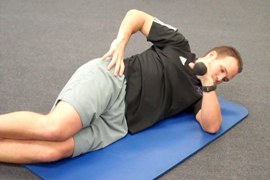
Begin by lying on the side with the elbow bent 90 degrees. Initially, position the arm between 60 and 75 degrees of abduction (scapular plane) to maximize comfort for beginners and minimize stress on the rotator cuff.
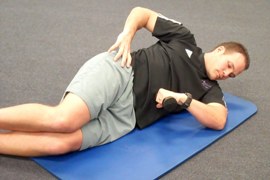
Holding a light dumbbell, gently allow the shoulder to internally rotate as the hand moves toward the floor.
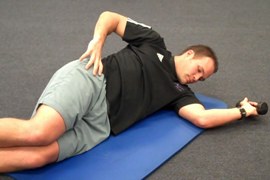
Pause at the bottom for three to five seconds, and then move the opposite direction to full external rotation, again pausing at the bottom for three to five seconds. Repeat for 10-15 reps, and do one to two sets as desired.
Application
This exercise is designed to improve horizontal external/internal rotation. In most cases, clients are in need of more posterior capsule stretching and internal rotation mobility work, so they will feel far more stretching on the internal rotation. This exercise can be done at smaller angles (less than 75 degrees) as well as at 90 degrees.
This exercise is effective for overhead athletes and general clientele suffering from limited internal rotation behind the back or past/present impingement type symptoms. The movement should always be smooth and fluid, all the while self-directed in terms of the amount of stretch as felt to be appropriate by the client. Begin with a very light weight (two to three pounds), and advance as tolerated. I would not exceed five pounds in most cases as it is designed to focus on mobility and not strengthening.
Additional Notes
Do not attempt to force through any shoulder pain. Any stretching sensations should be comfortable and not overly aggressive, and forcing internal rotation with the fixed scapula may aggravate the rotator cuff. Improving posterior capsular mobility, however, will improve shoulder function and reduce the likelihood of future rotator cuff problems in many clients.
In throwers, you will often see much more limited internal rotation in the throwing shoulder. This is normal as they often have excess external rotation or acquired laxity on their dominant arm from the repetitive overhead motion. The key in these clients is for total shoulder motion side to side to be comparable.
Brian Schiff, PT, CSCS (www.brianschiff.com) is a licensed physical therapist, respected author and fitness professional. He became a Certified Strength and Conditioning Specialist (CSCS) in 1998. In 2000, he opened his own personal training and sport-specific conditioning facility, Fitness Edge, in Dublin, Ohio. Brian has presented at several professional conferences and seminars on injury prevention and sport-specific training.

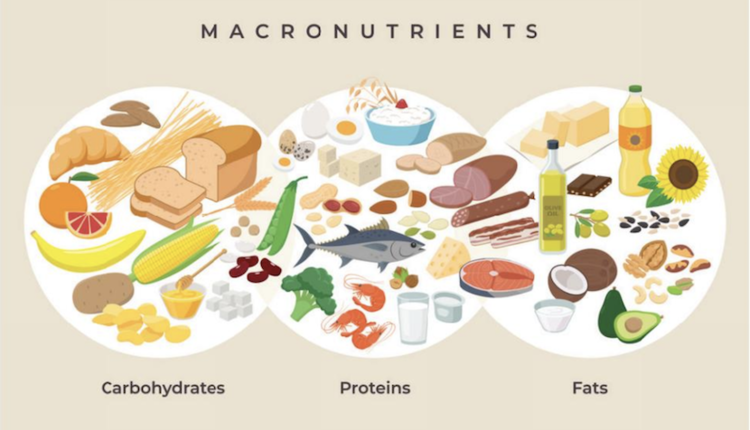





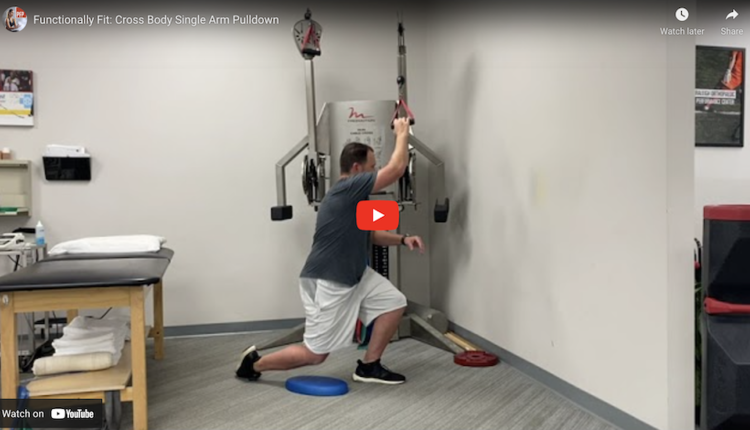

![dual-task]](https://cms-static.wehaacdn.com/fit--pro-com/images/dual-task-.5494.widea.0.jpg)






